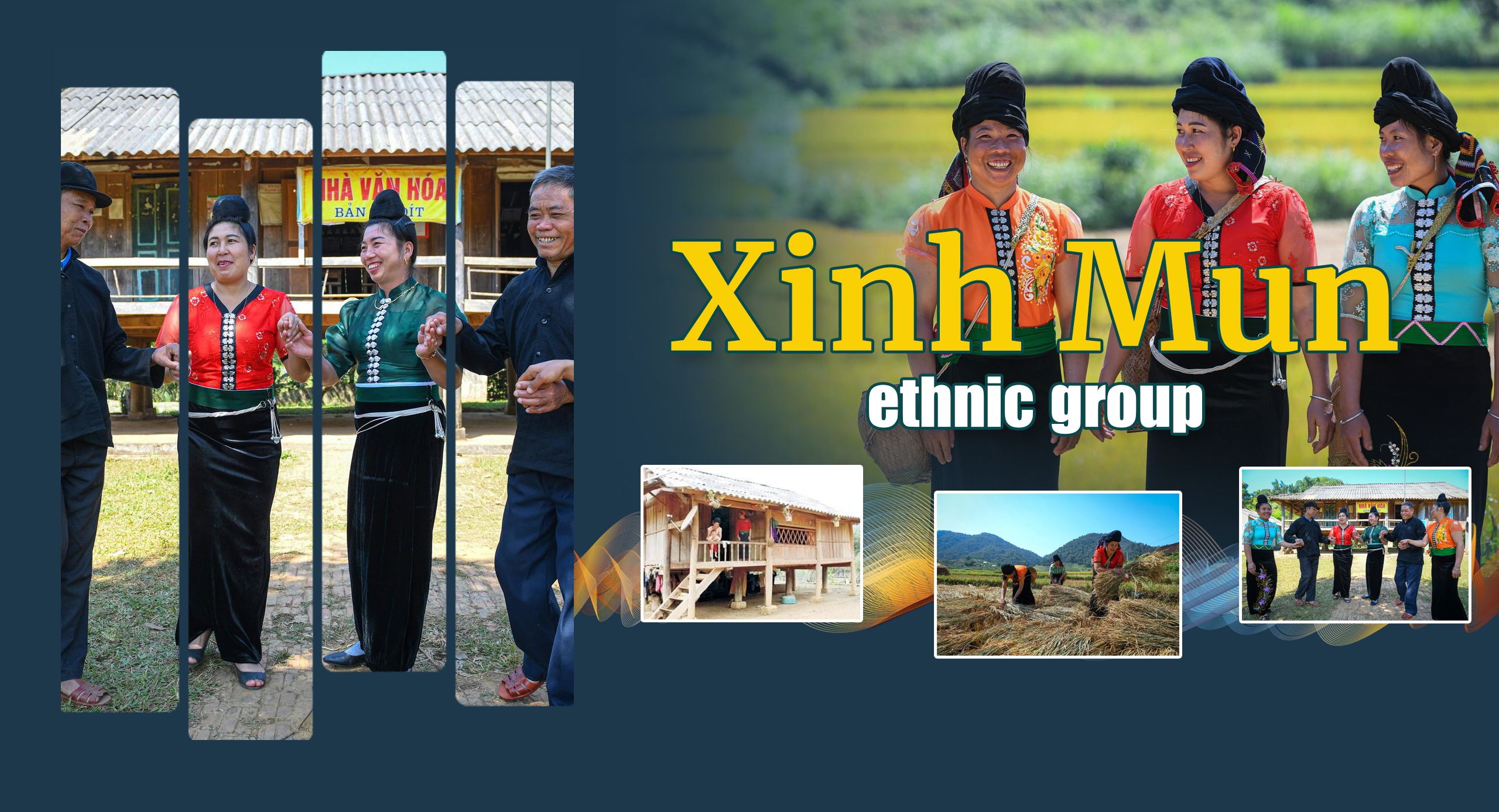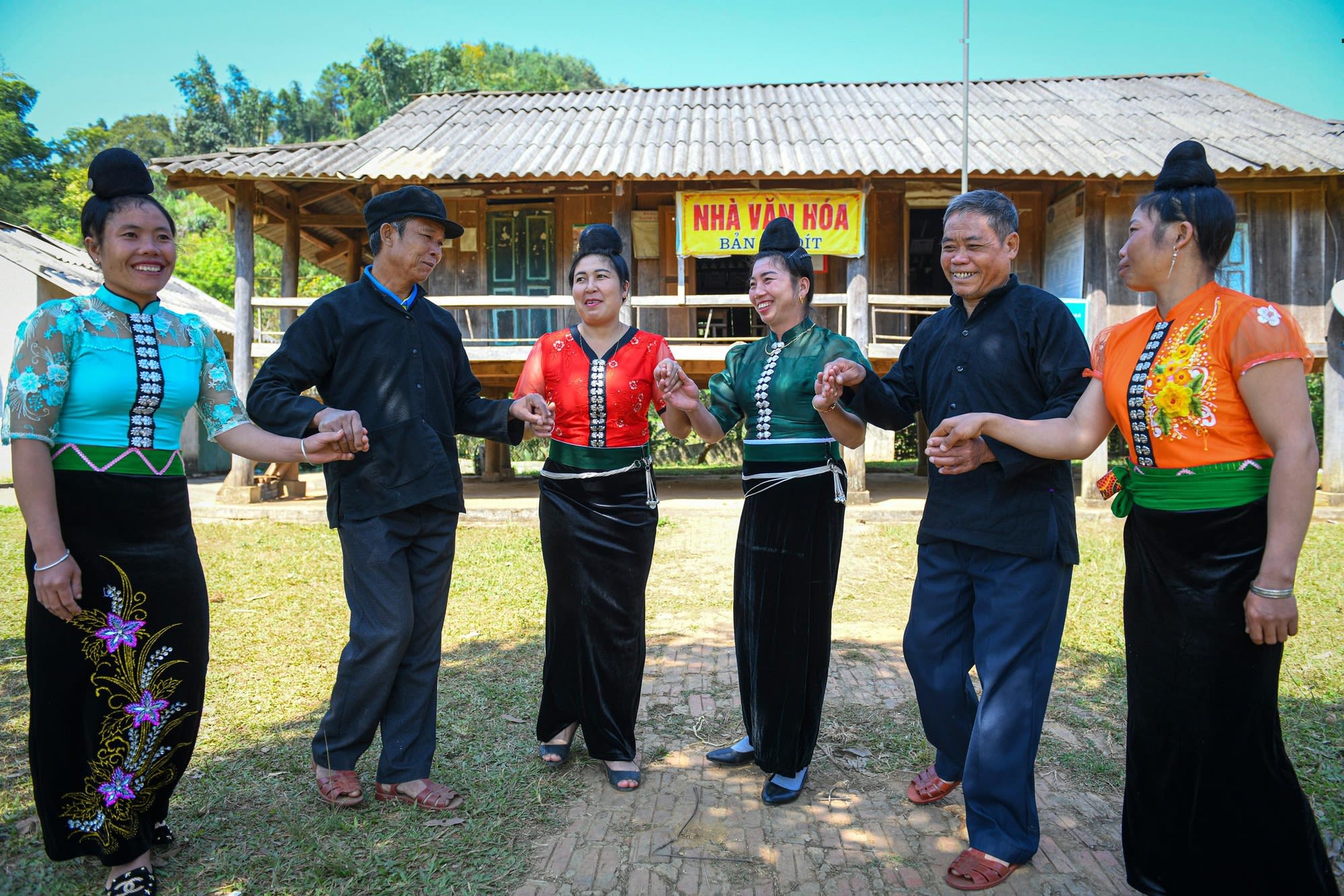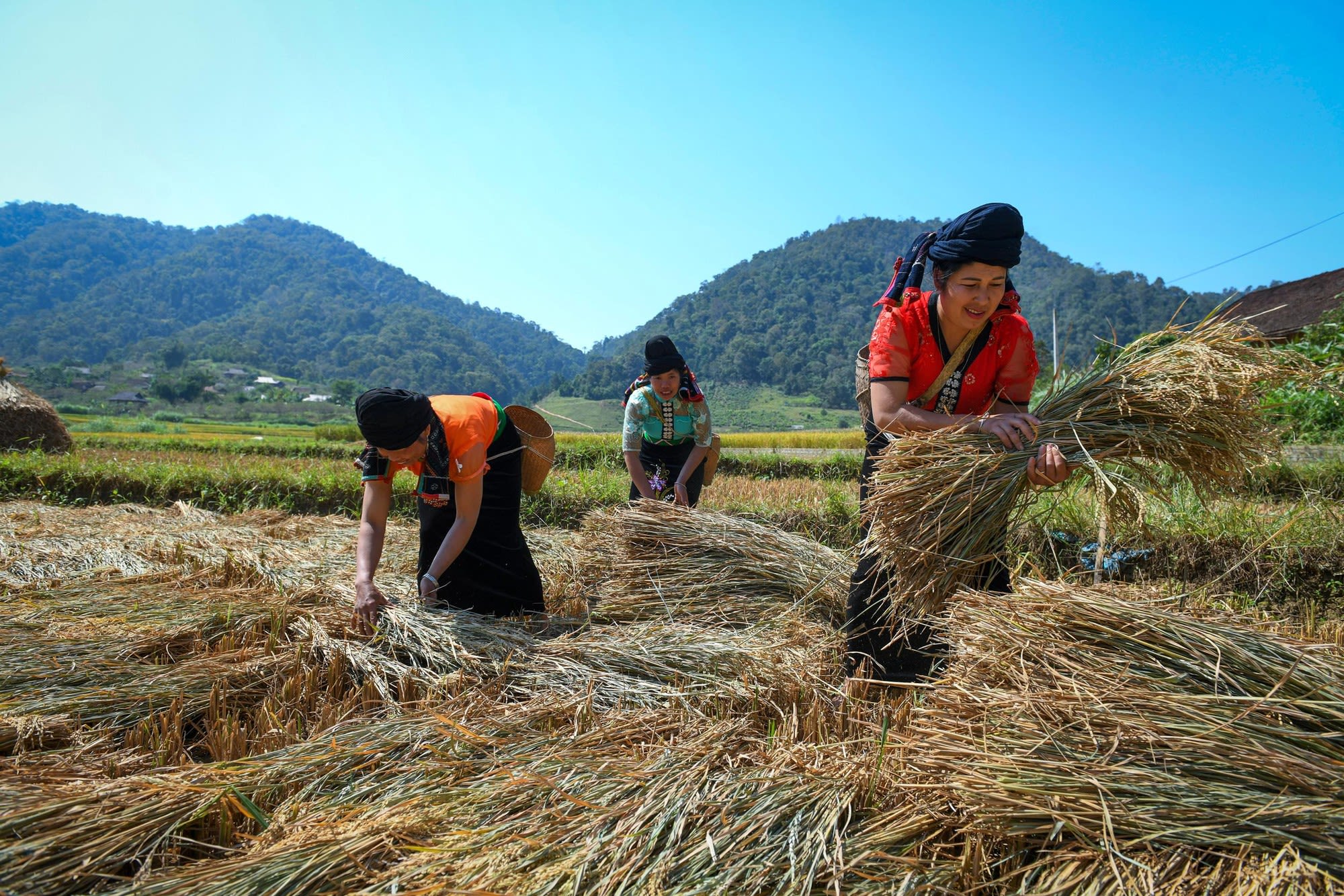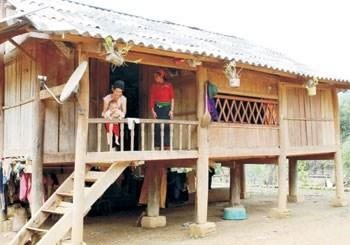
The Xinh Mun ethnic group is one of the earliest inhabitants of the Northwest region. The Xinh Mun ethnic group has a very diverse spiritual life, as well as a gradually developing economy.
1. Origin
The Xinh Mun is an ethnic group originating in Northwestern Vietnam and North Indochina, one of the earliest inhabitant groups in the Northwest.
- Self-titled: Xinh Mun
- Other names: Puoc, Xa, Pna
- Local groups: Xinh, Mun Da, Xinh Mun Nghet.
2. Population
According to census data of 53 ethnic minorities on April 1, 2019, the total population of Xinh Mun people reached 29,503. Of whom, 14,793 were male and 14,710 were female. Household size: 4.7 people/household. Percentage of the population living in rural areas: 99.4%.

The costumes of the Xinh Mun people are similar to those of the Thai people. (Photo: THANH DAT)
The costumes of the Xinh Mun people are similar to those of the Thai people. (Photo: THANH DAT)
3. Geographical distribution
Xinh Mun people live in a few districts in the border region between Vietnam and Laos: Yen Chau, Song Ma, and Moc Chau, mostly in Son La Province and a few residing in Dien Bien Dong District, Dien Bien Province.
4. Language
Belongs to the Mon - Khmer language group (Southern Asian language family). Xinh Mun people are good at Thai. In the past, some people knew how to use Thai characters, now they use common characters.
Education: According to census data of 53 ethnic minorities on April 1, 2019, the rate of Xinh Mun people aged 15 and over who can read and write is 64.7%; the rate of people attending primary school is 99.5%; the Percentage of people attending lower secondary school: 80.7%; Proportion of people attending high school: 23.6%. Meanwhile, the rate of out-of-school children: 21.8%.

A farming session of Xinh Mun people (Photo: THANH DAT)
A farming session of Xinh Mun people (Photo: THANH DAT)
5. Main features
Eating: Xinh Mun people eat sticky rice, and plain rice, enjoy spicy spices, drink "can" wine, have the custom of eating betel nuts, and dyeing their teeth black.
Costume: Like Thai people.

Traditional houses of Xinh Mun people (Photo: the Committee for Ethnic Minority Affairs)
Traditional houses of Xinh Mun people (Photo: the Committee for Ethnic Minority Affairs)
Housing: The traditional house of Xinh Mun people belongs to the type of stilt house (zieng). The Xinh Mun people often build a gable roof in the shape of a round cupola in the shape of a turtle shell.
Social relations: Small, patriarchal families are the main ones, but large families consisting of three generations or married brothers still living in the same house exist quite boldly. The number of members in the house is about 10-15 people, even up to 20-30 people in a house. The Xinh Mun people have many surnames, but the most common two are Vi and Lo.
Marriage: Popularizing custom with in-laws. Previously, a son had to stay an in-law for about 8-12 years or stay in-law for life, if his wife's family did not have a son. During the wedding ceremony, the bride and groom must change their names to a new name, common to both of them. This common name was given by his parents-in-law or his uncle and sometimes had to ask for yin and yang to find a common name. On the day of the wedding, the newlyweds return to the groom's house for 2 or 3 days, then move to the bride's house.
Childbirth: Pregnant women still go to the fields and forests until the day they give birth. When the child turns nearly 1 year old, the family invites a sorcerer to come and do a naming ceremony.
New house: Xinh Mun has a custom that whoever builds a house, the whole village comes to help. They often build houses on the occasion after the harvest and choose the land to build the house on by divination, and whether the land to build the house on is suitable for family members. Water day (the 2nd, 6th, 8th and 9th days of the month) is suitable for doing housework. Abstain from fire day i.e., 1st and 7th.
Funeral: The sound of gunfire in the house signals that someone is dead. They do not use wooden coffins but only bundles and choose soil to dig a grave by throwing eggs in a predetermined area, where the egg breaks, the grave is placed there. The tomb is carefully made, with everything necessary to represent the deceased. Xinh Mun people do not have the custom of reburial and grave digging.
Worship: Worshiping ancestors of two generations, parents and grandparents. The symbol for the place of ancestor worship is a pig's jawbone, a little betel nut on the lid of a rice basket, and a bamboo tube containing water. Offering new rice occasions, weddings, and new homes. Ancestor worship, depending on the place, can be done by only the eldest brother, or it can also be done by other brothers. The wife's parents are worshipped separately in a small shack, next to the house, and rice is cooked outside the house. The annual village offering ceremony is very important.
6. Economic condition
After 1954, especially since the Party and State conducted a campaign on sedentary settlement and building agricultural cooperatives, the Xinh Mun people began to change their farming methods. In addition to shifting cultivation, they have been known to do small irrigation to exploit terraced fields and cultivate wet rice. In addition to livestock and poultry, in many places, Xinh Mun people also dig ponds to raise fish.
According to census data of 53 ethnic minorities on April 1, 2019: the poverty rate: 65.3%; the Proportion of near-poor households: 9.4%; the Unemployment rate: 0.28%; Proportion of trained workers with diplomas and certificates: 2.1%; Proportion of employees working in the non-agricultural sector: 2.3%; Proportion of employees working in management or technical qualification at the high and middle level: 0.3%.